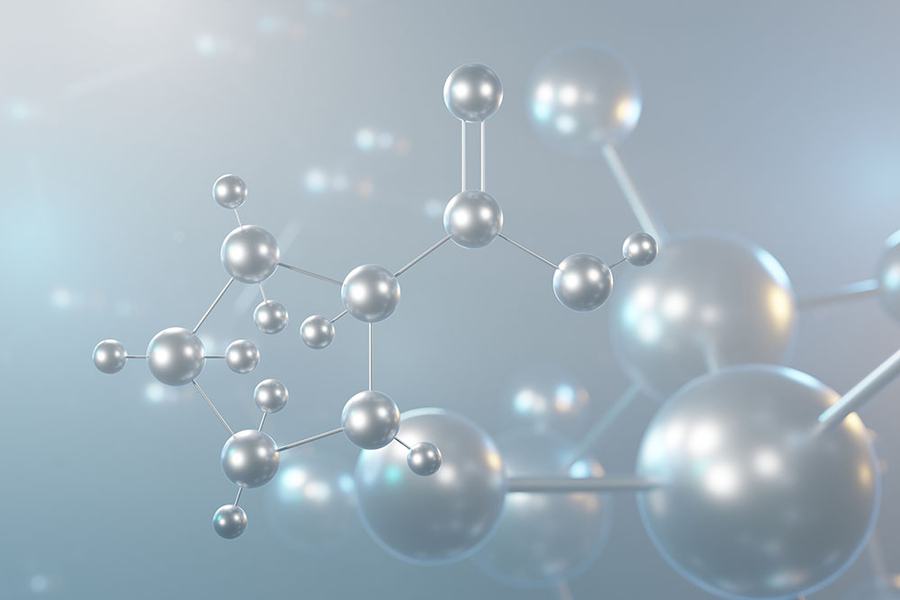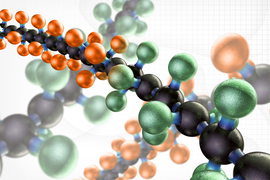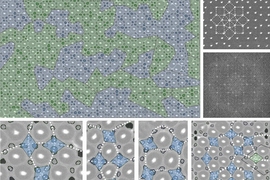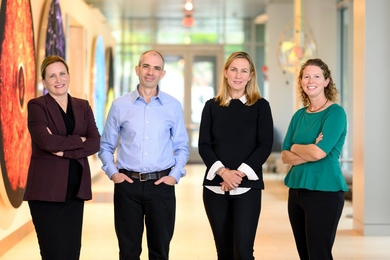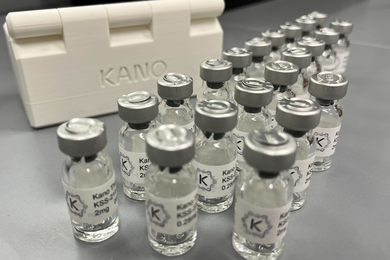Audio
Many modern medicines, including insulin and some vaccines, are made from proteins — complex molecules that perform specific functions in the body. Proteins are delicate: If they stick together or break down, the medicine can become less effective. Scientists have long sought ways to keep these drugs stable during manufacturing, storage, and use.
Amino acids have been used as stabilizers for protein-based therapies, but there was no general understanding of how they worked. Now, an international research team has reported new findings that could guide their use and improve the longevity and effectiveness of some pharmaceuticals. For example, adding the amino acid proline to insulin makes it twice as effective in the bloodstream, meaning diabetics could need fewer doses.
To understand these results, the researchers developed a general theory explaining how amino acids stabilize proteins. The open-access findings were reported recently in the journal Nature, by a team of researchers at MIT, École Polytechnique Fédérale de Lausanne (EPFL) in Switzerland, and the Southern University of Science and Technology in China.
Alfredo Alexander-Katz, the Michael (1949) and Sonja Koerner Professor of Materials Science and Engineering at MIT and a co-corresponding author of the paper, explains that amino acids are part of the life cycle of materials inside living cells. “The cell makes proteins and then breaks them,” he says. “I wouldn’t say it’s a perfect recycler, but it does recycle a lot of the material that it makes.”
After making proteins for specific purposes in the cell’s metabolism, the cell breaks them down into their component amino acids once their job is done, ready to be reassembled into new proteins for the next job.
The team discovered that free amino acids floating in the cell have an important effect on how proteins and other molecules interact, helping maintain balance and stability. “The regulation of protein-protein interactions is really key,” he says, “I would say it’s important for formulations, but also for the life cycle of cells.”
Science that sticks
Although pharmaceutical makers were aware of the stabilizing effect of amino acids on some treatments, the underlying mechanism was unclear.
Inspired by early results from EPFL Professor Francesco Stellacci’s research group, Alexander-Katz, a theorist by training, began investigating. “The original results that Francesco shared with me showed generality — he could stabilize proteins as well as synthetic nanoparticles,” he recalls.
That led him to think of proteins as balls with Velcro-like patches: They stick to each other and form clumps, leaving less surface exposed to interact with water and other essential materials, which limits how well protein-based medicines such as insulin can do their job.
But if amino acids act like loose bits of Velcro floating around, they can attach to those surface patches on the protein balls, blocking them from clumping and improving the effectiveness of the pharmaceutical protein.
After sending his proposed theory off to his collaborators, Alexander-Katz recalls, “I was thinking, ‘Well, this is not going to work. This is too simple.’” But after some clever tweaking by the EPFL team, he received graphs of experimental tests and saw that “the thing works. It fits all our experimental data.”
It took nearly another year of experiments and analysis to further confirm the findings. “We were able to corroborate independently that the numbers we were getting from fitting the theory were actually matching numbers that you would get experimentally.”
The theory may have even broader implications. These amino acids “will provide stability to proteins, but also to other colloids as well, so it’s not a protein-specific effect.” Colloids are suspensions of solid particles in a liquid — anything from a glass of milk to quicksand. The team also showed that combinations of molecules can produce the same stabilizing effect.
In cells, Alexander-Katz says, “somehow, biology uses the ‘trash’ it broke down and makes it into pieces to regulate important processes.”
For example, salt is known to destabilize biological systems. “If you put salty water on a plant, it’ll start producing more amino acids. Part of it is to counteract the osmotic effects,” Alexander-Katz explains, describing the stress caused by the salt, “but part of it may very well be to give stability to the protein suspension in the cell. The salt will destabilize the proteins, and the amino acids will counteract by stabilizing them.”
The process happens through very weak interactions. “These are interactions that you can barely measure, but there are a lot of them, and this will definitely have a strong effect.” He adds that it happens broadly: “Most amino acids will do it.”
A new way to stabilize drugs
The findings could have wide-ranging implications. Biologicals — medicines such as insulin, vaccines, or gene therapies derived from living organisms — are an increasingly important part of medicine, Alexander-Katz says. “More and more, we’re looking into therapeutics that are derived from proteins, and having a method to stabilize them — because you normally want to have them at high concentrations and keep a stable shelf life — that is really important.”
“Protein drugs have become some or our most important therapeutics against a variety of diseases, and the need to generate better formulations to improve safety and efficacy of these drug products is only growing,” says Eric Appel, an associate professor of materials science and bioengineering and Lee Otterson Endowed Faculty Scholar at Stanford University, who was not connected to this research.
He notes that new approaches like this one are essential for developing next-generation drug products that can address critical unmet medical needs. “I’m excited to see how the approaches developed in this work can lead to new formulations of promising protein drugs that have the potential to improve treatment outcomes and benefit patients.”
While amino acids have been used as stabilizers before, “our contribution is that there might be a more rational way to think about this,” Alexander-Katz says. “In the future, we could enable basically rational design of these formulations for pharma or other industries.”
Putting theory to the test
In the insulin experiment, the team showed the process works with molecules of great medical interest. By treating the insulin molecules with proline, “it makes it much more bioavailable,” Alexander-Katz says, referring to how much of the drug reaches the bloodstream. “Its activity increases dramatically, so it’s not just more stable, but it’s also more active.”
Because the amino acids tested are already in standard medical use, there should be little regulatory issue in applying this new method, Alexander-Katz says. “This could move more quickly into the real world than traditionally.”
“There could be really interesting applications of what we learn here for multiple diseases,” he adds, “and I hope the industry embraces this and uses it for the betterment of human health.”
The team’s lead authors were Ting Mao, Xufeng Xu, Pamina Winkler, and Cécilia Siri at EPFL, and the corresponding authors, in addition to Alexander-Katz, were Zhi Luo at Southern University of Science and Technology in Shenzhen, China, and Quy Ong and Francesco Stellacci at EPFL.
The work was supported by the Swiss National Science Foundation, the Horizon 2020 Research and Innovation program of the European Union, and the Nestlé Research Foundation.
